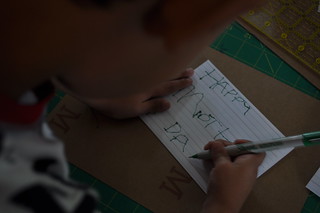Ten to Twelve: Academic Skills
Most children undergo through changes that are related to their physical growth and development between 10 and 12 years and go first through puberty and then towards pre-adolescence or the “pre-teen” years (for more information, please visit the following website). Some children experience get very tall, almost suddenly in the eyes of their parents or caregivers. Other children gain weight and tend to look “chubby.” They may feel very self-conscious about their physical appearance. This, in turn, may have an impact on the way they view themselves and on their relationship with school work. This is why it is important to consider the physical, cognitive, social and emotional changes at this stage while reviewing the following sections describing signs of atypical development for children between 10 – 12 years old.
Academic Skills
The ages between 10 and 12 years are a very important time for academic skills. All typically developing children who are between 10 and 12 should be reading, writing, spelling and engaging in math operations, such as adding, subtracting, multiplying, and dividing multiple digit numbers and fractions (Fig. 1). If a child is not at least engaging in these activities, he or she should get help, as soon as possible.
Figure 1. In the classroom
READING SKILLS
When it comes to reading, there are a number of warning signs. A child may:
- avoid reading activities;
- avoid storytelling activities;
- be able to read, but only very slowly;
- struggle with reading comprehension;
- be unable to use their skills to sound out new words with two- and three syllables; for example, “cart-ridge” and “ma-jes-tic”
- be unable to finish reading a paragraph;
- be unable to summarize what they just read;
- be unable to predict “what will happen next” in a story being read or told;
- be unable to self-correct when he or she makes a mistake while reading;
- fail to understand paragraphs that contain “implicit” messages.
WRITING SKILLS
There are warning signs when it comes to delays in writing. A child may:
- have very unintelligible penmanship (Fig. 2);
- be unable to write long sentences and paragraphs;
- struggle with prepositions (for example: at, in), pronouns (for example: I, you), and possessives (for example: mine, yours);
- struggle with basic punctuation, such as periods and commas;
- be unable to use capital letters where needed;
Figure 2. Unintelligible penmanship
- make many spelling mistakes, even when writing simple paragraphs;
- make the same spelling mistake, over and over again;
- be unable to organize a document into “introduction”, “body”, and “conclusion” sections;
- be unable to use a dictionary (Fig. 3) when needed;
- continue to reverse letters (for example: “deb” for “bed”);
- continue to invert letters (for example: “we” for “me”);
- continue to omit phonemes from basic and familiar words (for example: “chool” for “school);
- continue to add phonemes to basic and familiar words (for example: (“pelease” for “please”).
Figure 3. Dictionary
MATH SKILLS
There are warning signs when it comes to delays in math. A child may:
- struggle with complex multiplication problems using more than 2 digits, (for example: 952 X 852);
- struggle with complex division problems, (for example, 1549 / 350)
- struggle with complex math word problems (for example: “A train travels from one city to the next at the speed of 100 miles per hour. If it takes the train 4.5 hours to get to its destination, how many miles will it travel?);
- struggle with fractions;
- struggle with decimals (for example: 3.14);
- struggle with the understanding of percentages (for example: 90%);
- struggle with the understanding of comparative concepts (for example: “this rope is longer than that rope”).



0 comments
Kick things off by filling out the form below.
Leave a Comment